It looks like you're using an Ad Blocker.
Please white-list or disable AboveTopSecret.com in your ad-blocking tool.
Thank you.
Some features of ATS will be disabled while you continue to use an ad-blocker.
6
share:
Couple of ATs threads had me thinking of the Sumerians and their world who they traded and warred with,yrs ago I read a book by Sumerologist Samuel N
Kramer on the Sumerians,he was in fact my introduction to that civilization, a lot of ink flowed along with the energy to power a city on which
civilization is older,Kemet or Sumer,but in reality they most likely are not more than a couple of centuries difference from each other either way.
But I was intrigued by a second civilization mentioned by the Sumerians and that was Meluha a favored trading partner,in some ways it mirrored the
relationship between Kemet and Pwanet or Punt,but location had been difficult to pin down for among them,Dulium is more likely Bahrain althought not
everyone is on board,and Megan is Oman again not evryone is on board. The possible location for Meluhha is as follows
Harappa Indus Valley complex.
Oman.
Afghanistan.
Kuwait.
Somalia or coastal East Africa.
Kush.
But that Megan and Meluhha is Kemet and Kush respectively we got from the later Assyrians however a tie in to much older contact with the Nile Valley can be gleened from the Gebel Arak Knife of a possible Gutian invasion
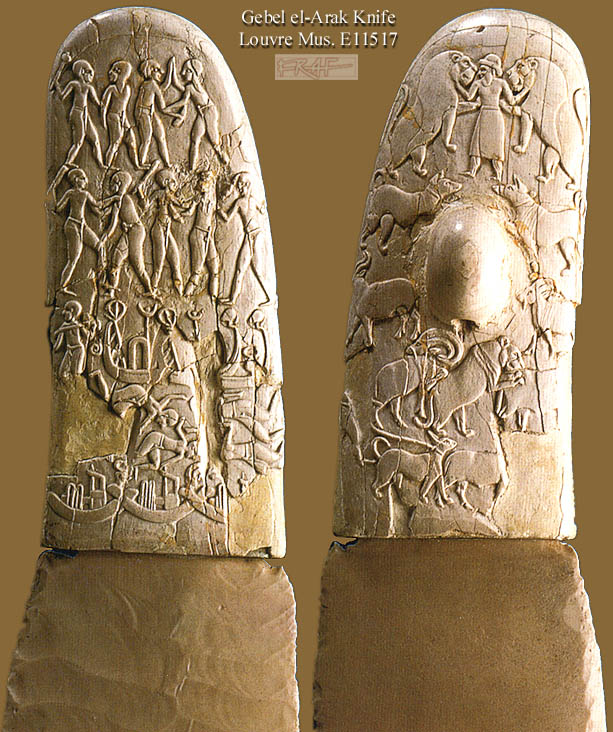
Gebel el-Arak Knife
Pre-historic Egypt, Naqada II
(3500-3100 B.C.)
Petrie, W.M. Flinders. The Making of Egypt, London. New York, Sheldon Press; Macmillan, pp. 65-66, 1939. Petrie famously known as "The Father of Pre-history".
Chapter VII. The Dynastic Conquest
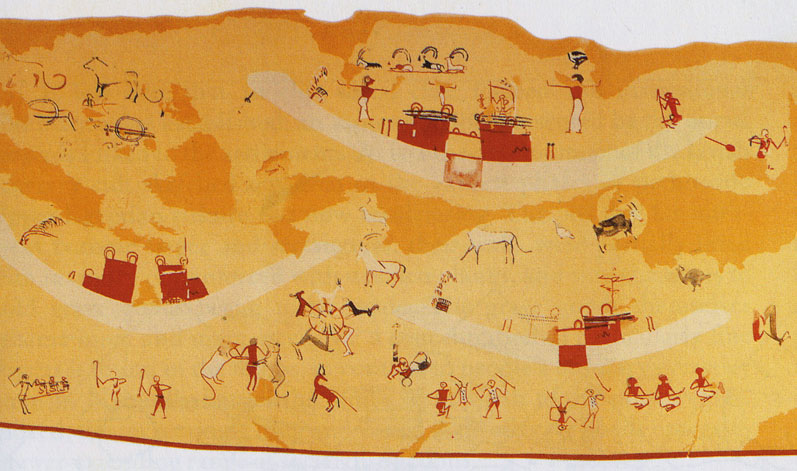
Note the man taming two lions as with the Knife other individuals carrys the Was Scepter a symbol of chiefly or royal power which was aslo found in the South Sahara 6kyrs B.C goto link 1.bp.blogspot.com...
Read more: egyptsearchreloaded.proboards.com...
Harappa Indus Valley complex.
Oman.
Afghanistan.
Kuwait.
Somalia or coastal East Africa.
Kush.
But that Megan and Meluhha is Kemet and Kush respectively we got from the later Assyrians however a tie in to much older contact with the Nile Valley can be gleened from the Gebel Arak Knife of a possible Gutian invasion

Gebel el-Arak Knife
Pre-historic Egypt, Naqada II
(3500-3100 B.C.)
Petrie, W.M. Flinders. The Making of Egypt, London. New York, Sheldon Press; Macmillan, pp. 65-66, 1939. Petrie famously known as "The Father of Pre-history".
Chapter VII. The Dynastic Conquest
Conflict of Races We now have to view as a whole the tumultuous age of dynastic invasion. For some centuries we may see large movements going on, threats from the south and east, and influences from other quarters--one of the great ages of unrest and admixture like the ages of the XIII-XVIIth or XXIIIrd-XXVth dynasties. This troubled time occupied the Semainean age. For a demonstration of the invasion by the dynastic race, one of the greatest events in the history of Egypt, we turn to a single sculpture in ivory, the knife handle from Gebel el-Arak, probably presented to some great chief. The flint blade of the knife was a fine example of parallel flaking. The ivory handle is carved in relief on both sides. On the top of the first side is shown a combat between short-haired men with bullet heads and long-haired men. The bullet heads, like the followers of Narmer, are in all cases getting the better. Both parties are unclothed, but wear a waist cord to hold up a dagger sheath. The invaders only are armed, using a truncheon. In the lower scene are two lines of ships, and drowned men lying in the sea between them. The upper line is of vessels with high prow and stern, the lower has vessels with cabins like the Egyptian. This is Egyptian history what the Bayeux tapestry is to English history, a national monument of conquest. Happily this is not the only representation of these opposing people, but they are shown also on the one painted tomb at Hierakonpolis.
There are also combats of black men overcoming red men. Source of the Conquerors Adding to the history, there is on the other side of the knife handle a figure of a hero or divinity subduing two lions. Such a group is widely spread, anciently, with lions in Elam, Mesoptamia and Greece; tigers in the Harappa of India; winged bulls or horses in Assyria; ibex in Arabia and deer in Italy; wolves at Athens; swans in Greece. For various animals we see that the idea is not the restraint of violence, but the assumption of power over all Nature, however untamable. Such then is the purpose of this group, and the source of it is a cold country, for the hero has a thick coat and cap, and the lions have thick hair under the whole body as a protection in snow. It must be from mountainous Elam and not from the plains of Mesopotamia that the figures come. The two beautiful figures of dogs belong to the Babylonian myth of Etana on the flying eagle, with two dogs looking up after it. Below these are exquisitely spirited figures of animals, the connection of which we cannot realize in the broken connection. Here is an historic monument of the highest value, but badly wreaked by the Government policy of seizing discoveries. In a free system of rewards, the tomb where this lay would have comes under official care, all collateral objects would have been preserved, and every fragment of such an ivory could be recovered by sifting. But this object was never known officially till in the hands of the dealer. The ships on the ivory knife handle are distinguished by having an animal head on the prow, probably as a figurehead. These are the bull's head and the oryx head, and they possibly signify the names of the vessels.
Below is the black ship at Hierakonpolis, belonging to the black men who are shown as conquering the red men; and the other ship of these conquering invaders on the knife handle, with the similar high prow and round-topped cabin. The subjects of the invasion and conquest carved on this knife handle, and depicted with such vigour . . . . serve to clear away the distorted view of supposing all the history to have been a smooth uniform development of a single people. Even the earlier settlements of this and other lands were the result of the mixture of half a dozen races fighting for supremacy.-- W.M. Flinders Petrie

Note the man taming two lions as with the Knife other individuals carrys the Was Scepter a symbol of chiefly or royal power which was aslo found in the South Sahara 6kyrs B.C goto link 1.bp.blogspot.com...
Read more: egyptsearchreloaded.proboards.com...
edit on 4-3-2013 by Spider879 because: (no reason given)
According Kramer
After fashioning the Black-headed people the God...Enki? went to Meluhha and porfusely blessed it.
Magan and Meluhha being Kemet and Kush respectivly.
The first mention of the Meluhha in Egyptian texts were written during the rule of Ramses II letter to the Hittites (KUB III 52) where he mentions that he was ending men of Meluhha to the Hittite royal court. During this period and later periods Meluhha=Kashi (Kush).
www.egyptsearch.com...
In 1999, an Egypt-Assyrian synchronism from the Great Inscription of Tang-i Var in Iran was re-discovered and re-analysed. Carved by Sargon II of Assyria (722-705 BC), the inscription dates to the period around 707/706 BC and reveals that it was Shebitku, king of Egypt, who extradited the rebel king Iamanni of Ashdod into Sargon's hands, rather than Shabaka as previously thought.[5] The pertinent section of the inscription by Sargon II reads: “
en.wikipedia.org...
The Road to Meluhha
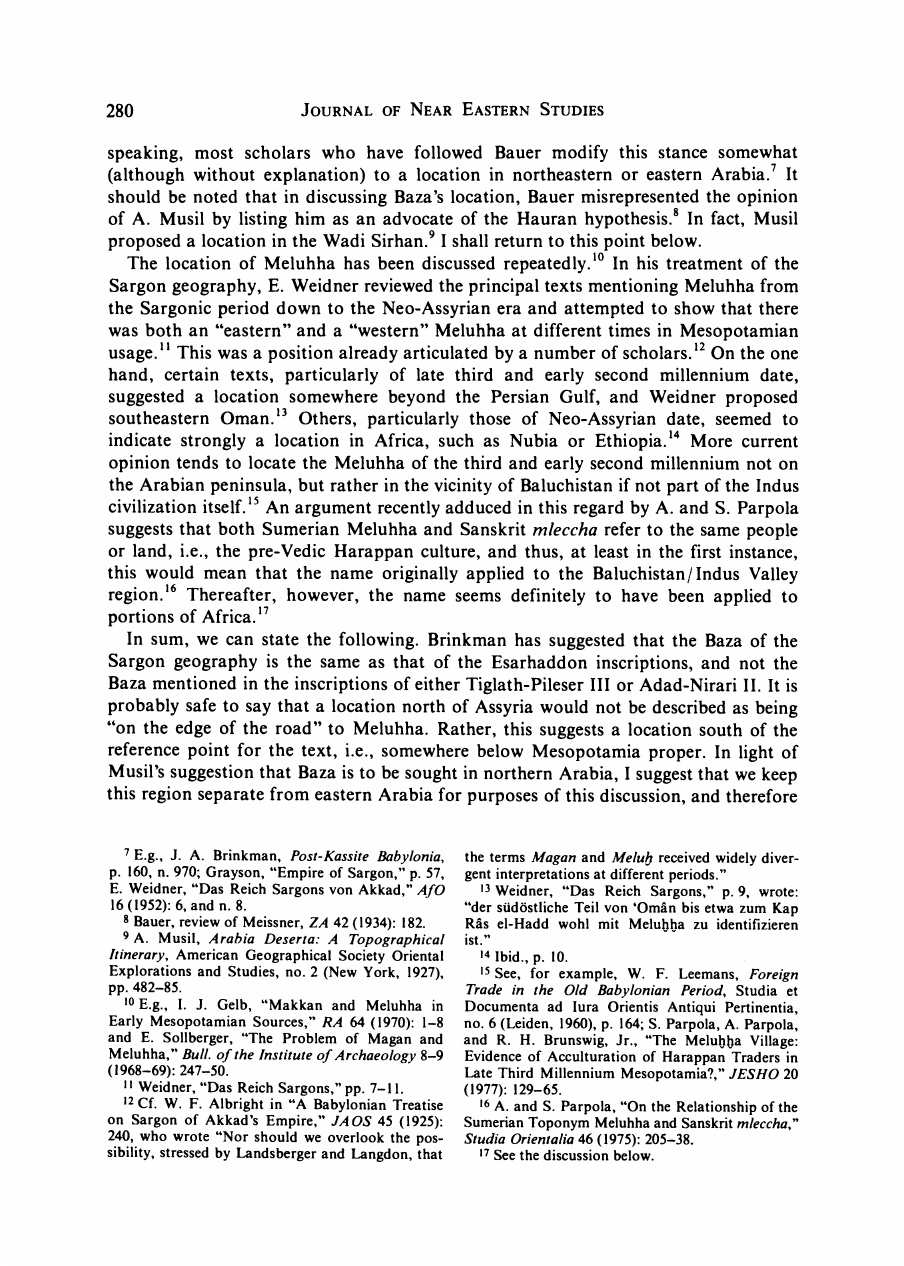
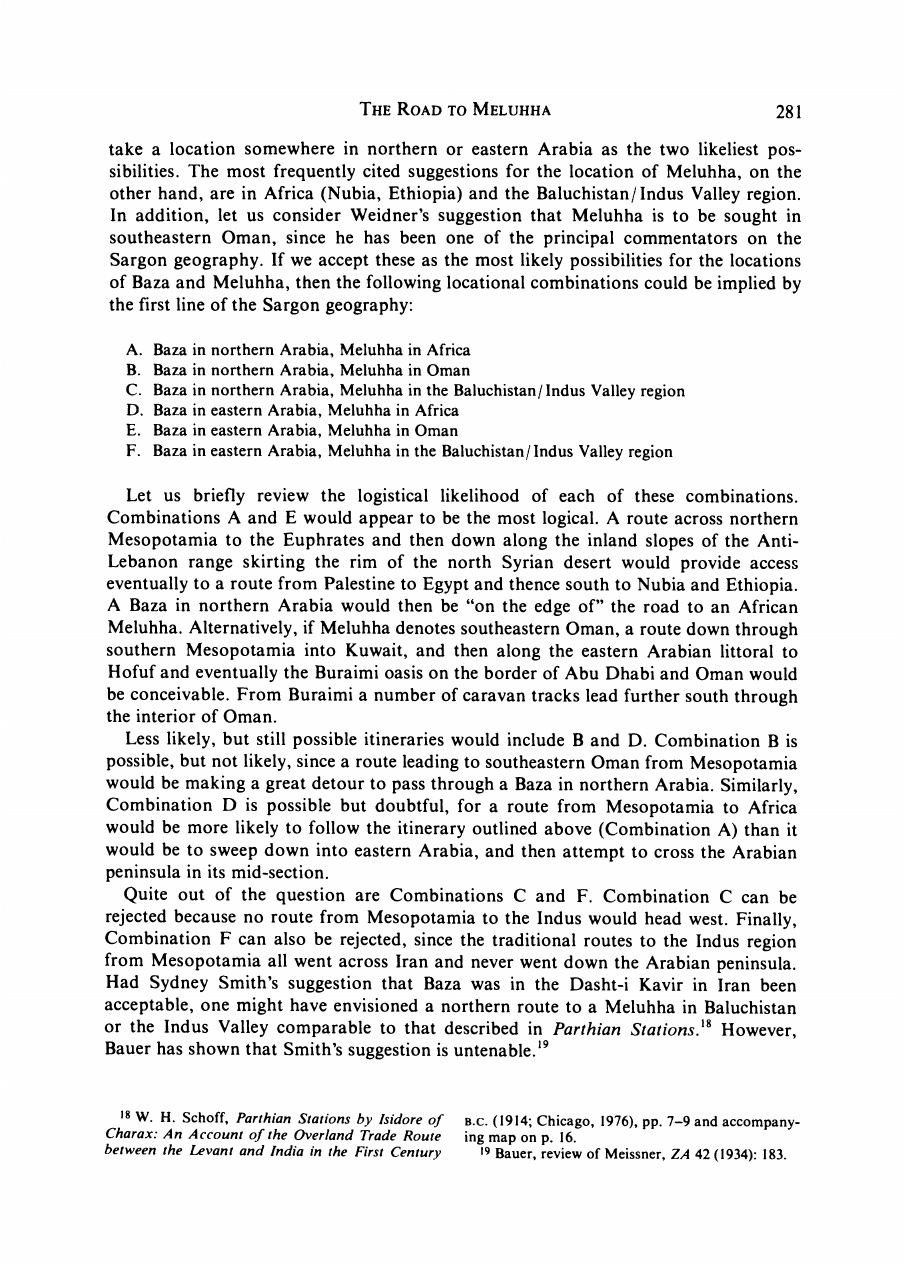
www.academia.edu...
After fashioning the Black-headed people the God...Enki? went to Meluhha and porfusely blessed it.
Magan and Meluhha being Kemet and Kush respectivly.
After An, Enlil, Enki and Ninhursaja had fashioned the black-headed people, they also made animals multiply everywhere, and made herds of four-legged animals exist on the plains, as is befitting. Then he proceeded to the land of Meluha. Enki, lord of the Abzu, decreed its fate: Black land, may your trees be great trees, may your forests be forests of highland mes trees! Chairs made from them will grace royal palaces! May your reeds be great reeds, may they ......! Heroes shall ...... them on the battlefield as weapons! May your bulls be great bulls, may they be bulls of the mountains! May their bellowing be the bellowing of wild bulls of the mountains! The great powers of the gods shall be made perfect for you! May the francolins of the mountains wear cornelian beards! May your birds all be peacocks! May their cries grace royal palaces! May all your silver be gold! May all your copper be tin-bronze! Land, may all you possess be plentiful! May your people ......! May your men go forth like bulls against their fellow men!"
The first mention of the Meluhha in Egyptian texts were written during the rule of Ramses II letter to the Hittites (KUB III 52) where he mentions that he was ending men of Meluhha to the Hittite royal court. During this period and later periods Meluhha=Kashi (Kush).
The Meluhhaites according to the inscriptions of Sargon II (c. 712 BC) mention the “bowmen, chariots and horses of the king of Meluhha”, together with the Egyptians fought the Assyrians in Palestine. Later the Assyrian king Assurbanipal of Assyria, noted in his inscriptions that he “ marched against Magan (Egypt) and Meluhha (Kush) in order to defeat the armies of Tarku (Taharqa), king of Egypt and Kush .
www.egyptsearch.com...
In 1999, an Egypt-Assyrian synchronism from the Great Inscription of Tang-i Var in Iran was re-discovered and re-analysed. Carved by Sargon II of Assyria (722-705 BC), the inscription dates to the period around 707/706 BC and reveals that it was Shebitku, king of Egypt, who extradited the rebel king Iamanni of Ashdod into Sargon's hands, rather than Shabaka as previously thought.[5] The pertinent section of the inscription by Sargon II reads: “
"(19) I (scil. Sargon) plundered the city of Ashdod, Iamani,[6] its king, feared [my weapons] and...He fled to the region of the land of Meluhha and lived (there) stealthfully (literally:like a thief). (20) Shapataku' (Shabatka) king of the land of Meluhha, heard of the mig[ht] of the gods Ashur, Nabu (and) Marduk which I had [demonstrated] over all lands...(21) He put (Iamani) in manacles and handcuffs...he had him brought captive into my presence.
en.wikipedia.org...
The Road to Meluhha


www.academia.edu...
That's interesting, for the period you'd be looking at the city state of Qustul and Ta Seti, located at the first and second cataracts of later
Dynastic Egypt, rather than the entire land of Kush or Nubia, but there is shared iconography between there and Sumeria, extending into the First
Dynasties when Ta Seti had been assimilated into Kemet.
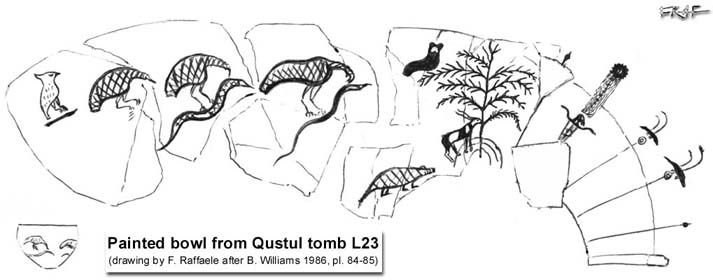

edit on 4-3-2013 by Kantzveldt because: (no reason given)
reply to post by Kantzveldt
Yes Ta-Seti had commercial relations with atleast Syria and Palestine as the grave goods at cemetary L shows, did they had strong relations with folks even further east???.. but what I found interesting is some cultural give and take,although of a later date and from the successors of Ta-Seti.
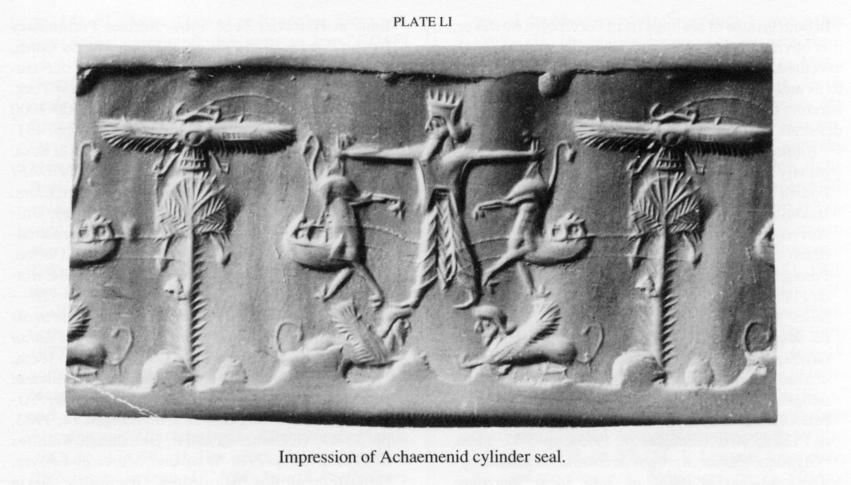
Note Sumerian winged disc motif and the taming of the lions.
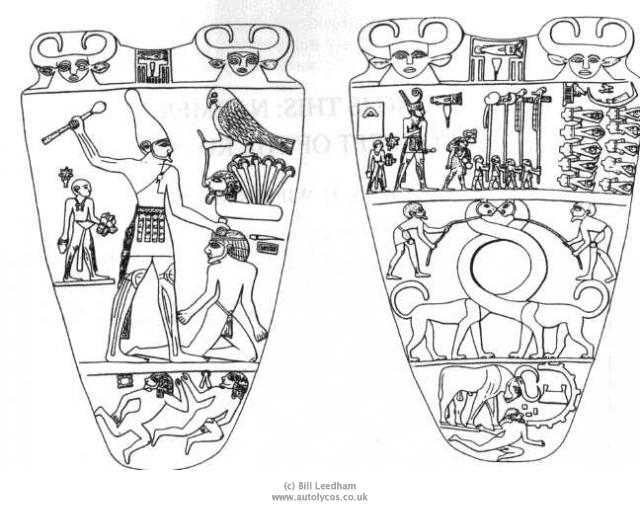
Narmer's Palatte the taming of a weird lion like creature,said to be associated with the taming of the two lands.
Yes Ta-Seti had commercial relations with atleast Syria and Palestine as the grave goods at cemetary L shows, did they had strong relations with folks even further east???.. but what I found interesting is some cultural give and take,although of a later date and from the successors of Ta-Seti.

Note Sumerian winged disc motif and the taming of the lions.

Narmer's Palatte the taming of a weird lion like creature,said to be associated with the taming of the two lands.
edit on 4-3-2013 by Spider879 because: (no reason given)
This is the kind of thread I come to ATS for. It's loaded with information, and is well presented. Thank you. I'll get more into it later today.
reply to post by Spider879
It probably does relate to the joining of the two lands in that context, but lets have a look at another Naqqada period example on a knife handle;
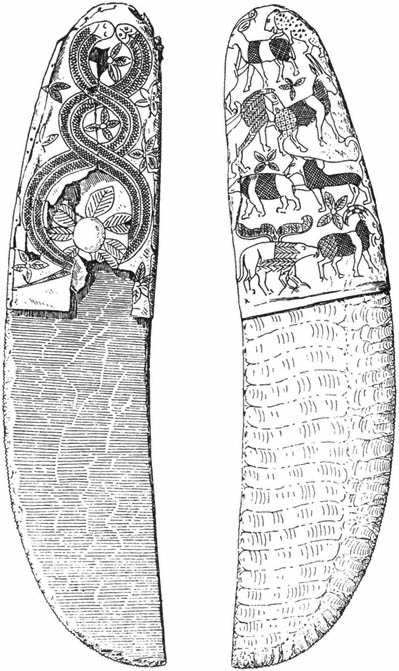
And another one or two;

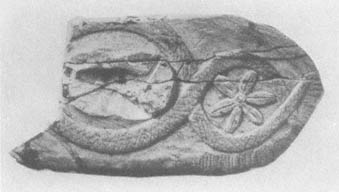
Now the curious thing is thats the exact same motif that occurs at Jiroft in South Western Iran from the Kingdom of Aratta period, the examples from there i would say relate to the joining inter-relationship of the Eastern and Western horizons, as part of the afterlife cult

The common denominator between South Western Iranian and pre-Dynastic Egypt would probabbly have to be Sumer, who invaded Aratta in order to relocate the cult of Inanna, it's craftsmen and trappings, which had primacy there to Uruk.
I covered their tradition of 'star-gates here;
www.abovetopsecret.com...
It probably does relate to the joining of the two lands in that context, but lets have a look at another Naqqada period example on a knife handle;

And another one or two;


Now the curious thing is thats the exact same motif that occurs at Jiroft in South Western Iran from the Kingdom of Aratta period, the examples from there i would say relate to the joining inter-relationship of the Eastern and Western horizons, as part of the afterlife cult

The common denominator between South Western Iranian and pre-Dynastic Egypt would probabbly have to be Sumer, who invaded Aratta in order to relocate the cult of Inanna, it's craftsmen and trappings, which had primacy there to Uruk.
I covered their tradition of 'star-gates here;
www.abovetopsecret.com...
reply to post by Kantzveldt
Hah! great stuff Kantzveldt, new things to learn and perhaps things to unlearn,I'll have to go over your link carefully and not merely skim through it to do it any sort of justice.
Hah! great stuff Kantzveldt, new things to learn and perhaps things to unlearn,I'll have to go over your link carefully and not merely skim through it to do it any sort of justice.
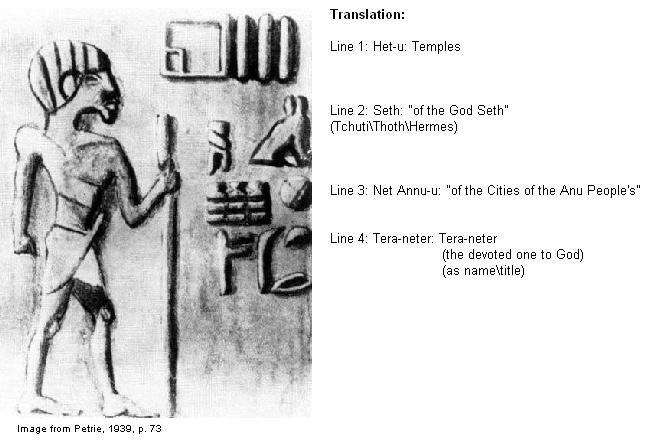
The "Tera-neter" tile is predynastic being found by British Egyptologist W.M. Flinders Petrie (1853-1942) in the early temple at Abydos underneath the dynastic temple. The figure is on a green glazed faience. Petrie, famously known as "The Father of Pre-history". Petrie, excavations at Nagada and Ballas in Upper Egypt nearly 100 years ago unearth nearly 2200 ancient graves. He wrote over a thousand books, articles and reviews reporting on his excavations and his finds.
Petrie, The Making of Egypt, 1939:
The Aunu People. Besides these types, belonging to the north and east, There is the aboriginal race of the Anu, or Aunu, people (written with three pillars), who became a part of the historic inhabitants. The subject ramifies too doubtfully if we include all single-pillar names, but looking for the Aunu, written with the three pillars, we find that they occupied Southern Egypt and Nubia, and the name is also applied in Sinai and Libya.
As to the Southern Egyptians, we have the most essential document, a portrait of a chief, Tera-neter, roughly modeled in relief in green glazed faience, found in the early temple at Abydos. Preceding his name, his address is given on this earliest of visiting cards, "Palace of the Aunu in Hermen city, Tera-neter." Hemen was the name of the god of Tuphium (Lanz., Dict, 544), 13 miles south of Luqsor. Erment, opposite to it, was the place of Aunu of the south, Aunu Menti.
The next place in the south is Aunti (Gebeleyn), and beyond that Aunyt-seni (Esneh). The chief peculiarity of the figure is the droop of the chin; this is caused by a slanting jaw with short ramus. The same type of jaw is seen in the ivory king from Abydos, and moreover, the Scorpion king who preceded Nar-mer. These figures are, then, the precious portraits remaining of the native pre-Menite kings of the south, and they are of a type certainly different from the dynastic type of the square-jawed Nar-mer (Mena) and his follows.
The difference of the slope of jaw in the Aunu people was illustrated by our researchers in the cemetery at Tarkhan. In dealing with the remains, the jaws were all photographed in position, and they show two groups of the slope of the lower edge as 20 and 28 to the horizontal. Now we can go a step further. On the big mace-head of the Scorpion king there are carved the standard figured. These emblems of Min and Set, with rekhyt plovers handing from them. The rekhytu people, however, were the special care of the dynastic race, protected by Aha and by Thetu. They were an organized rank ruled by a mayor in the Vth and VIth dynasties. The Scorpion king was, then, an enemy of the dynastic falcon, Horus.
As we find the Aunu strong in the south, but the rekhytu strong in the north, it seems that the rekhytu came in with the dynastic invasion, entering the Nile valley at Koptos. Those who went south were attacked by the Aunu, and those going north founded a base at Heliopolis (Syro-Egypt, 2). The heads on pl. XXXVIII are arranges to show the difference of type between the Aunu; the dynastic people, the 1st dynasty in Sinai, the IInd dynasty, Khosekhem; the IIIrd dynasty, Sudany, Sanekht, and Zeser." wysinger.homestead.com...
I posted the above because of the ethnic group called the Anu who I believe to be part of the same A- Group culture given the parallels in cultural transmission to or from Sumer we have one of the main Sumerian God called Anu,it is possible I am reaching and there is no connection between that deity and the Nile Valley people called the Anu but there is more,if we go by the Bible
Cush became the father of Nimrod; he was the first on earth to be a mighty man. He was a mighty hunter before the LORD; therefore it is said, 'Like Nimrod a mighty hunter before the LORD.' The beginning of his kingdom was Babel, Erech, and Accad, all of them in the land of Shinar. From that land he went into Assyria, and built Nineveh, Rehoboth-ir, Calah, and Resen between Nineveh and Calah; that is the great city...(Genesis 10:6-12)
Warning the Bible is not a history book
But it gives further insights on what our ancestors believed.
edit on 4-3-2013 by Spider879 because: (no reason given)
new topics
-
Watch as a 12 million years old Crab Emerges from a Rock
Ancient & Lost Civilizations: 3 hours ago -
ILLUMINATION: Dimensions / Degrees – Da Vincis Last Supper And The Philosophers Stone
Secret Societies: 9 hours ago -
Just Sick of It! Done! Can't take it anymore!
General Chit Chat: 10 hours ago
top topics
-
Speaking of Pandemics
General Conspiracies: 12 hours ago, 9 flags -
Watch as a 12 million years old Crab Emerges from a Rock
Ancient & Lost Civilizations: 3 hours ago, 9 flags -
ILLUMINATION: Dimensions / Degrees – Da Vincis Last Supper And The Philosophers Stone
Secret Societies: 9 hours ago, 8 flags -
Just Sick of It! Done! Can't take it anymore!
General Chit Chat: 10 hours ago, 5 flags -
Stuck Farmer And His Queue Jumping Spawn
Rant: 12 hours ago, 4 flags
active topics
-
What Is 'Quad Demic'? Mask Mandate Returns In These US States
Diseases and Pandemics • 35 • : nugget1 -
Vehicle Strikes people in New Orleans
Mainstream News • 300 • : Oldcarpy2 -
Joe Biden gives the USA's Highest Civilian Honor Award to Hillary Clinton and George Soros.
US Political Madness • 39 • : Kaiju666 -
DONALD J. TRUMP - TIME's Most Extraordinary Person of the Year 2024.
Mainstream News • 61 • : Oldcarpy2 -
Candidate Harris Supporter MARK CUBAN Says Trump Has No Smart-Intelligent Women in His Orbit.
2024 Elections • 88 • : Oldcarpy2 -
Matthew Livelsberger said he was being followed by FBI
Political Conspiracies • 72 • : WeMustCare -
Winter Storm
Fragile Earth • 30 • : RickinVa -
Watch as a 12 million years old Crab Emerges from a Rock
Ancient & Lost Civilizations • 9 • : FullHeathen -
-@TH3WH17ERABB17- -Q- ---TIME TO SHOW THE WORLD--- -Part- --44--
Dissecting Disinformation • 3941 • : WeMustCare -
Orbs Appear And Form Triangle On Live Cam.
Aliens and UFOs • 28 • : DaydreamerX
6
